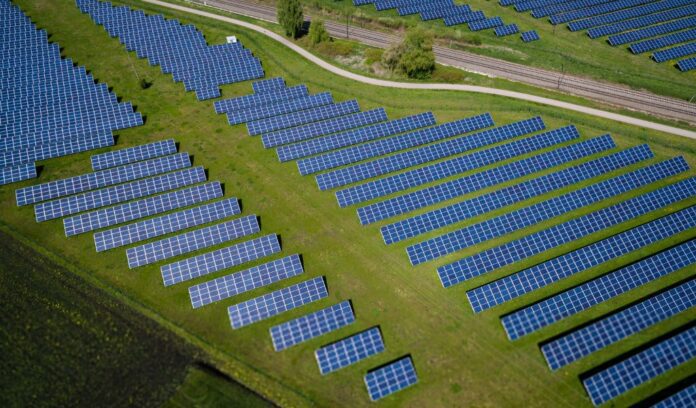Every person who has ever bought a household appliance has encountered the energy efficiency classes. This is because a label with the energy efficiency class must be clearly visible on every appliance. But what does the EU energy label mean? Can it really be used to consciously make environmentally friendly purchases and save money on electricity consumption when playing on the 20Bet mobile?
Since the early 1990s, an EU directive has regulated energy efficiency classes and the use of the energy efficiency label, which is therefore also called the EU energy label, throughout Europe.
Originally, seven efficiency classes were defined:
- from A (green, best, i.e. particularly low energy consumption)
- to G (red, the worst, i.e. particularly high energy consumption).
Today, the rainbow-colored EU energy label is mainly found on household appliances (refrigerators, washing machines, dishwashers, tumble dryers, ovens, vacuum cleaners, etc.), as well as on televisions, lamps and cars.
The Problems
However, the energy efficiency classes and thus the EU energy label have some problems:
- The energy efficiency of a refrigerator cannot be directly compared with that of an incandescent lamp. That’s why the efficiency scale for each appliance that has to carry the label is defined separately according to complicated criteria.
- A division into school grade-like values in seven classes still leaves a lot of room for maneuver within the respective classes as far as the energy consumption of an appliance is concerned.
- Which product deserves the top grade A was determined 20 years ago with the help of a reference device. Thanks to technical improvements, there were soon products in some product groups that were more energy-efficient than an A appliance had to be by then. The consequence would have been that better and worse appliances would have received an A in equal measure. In the face of adversity, new classes were established that were supposed to be “even better” than A, namely A+, A++ and A+++. However, this created unnecessary confusion. In the meantime, however, these classes no longer apply. Since March 2021, the new energy efficiency classes have applied, from A to G.
- With new energy efficiency classes, the fact that there were few products with energy efficiency A and B as of March 2021 initially caused irritation. If all models available on the market are now mediocre to poor, this creates little orientation at first. Only when more efficient products are actually developed in some time will it be possible to compare good and bad models on the basis of the EU energy label.
There is also the following: The scale does not range from A to G everywhere. In some product groups, there are no appliances with an A at all (for example, vacuum cleaners), but in others there are. Also, not all labels reach down to the letter G, but only to D (for example, those of tumble dryers).
Energy Efficiency Classes on the EU Energy Label
Today, the scale looks something like the following picture and ranges from the best possible value A to worse, but still good values such as B, C, D and the really bad G. As mentioned, not all product groups make full use of the scale.
Critics also complain that the energy efficiency classes are oversimplified: consumers are lulled into believing that they have done something good, whereas it would be better if they were to inform themselves more thoroughly and thus possibly come across an appliance that is much more environmentally friendly. Often it would also be best to forego a purchase altogether – as in the case of clothes dryers, which are unnecessary energy guzzlers. It is also often wiser to continue using an existing appliance for a while (or have it repaired) instead of buying a new one.
The rather rough scaling also contributes to further confusion: For a B on lamps, for example, the so-called energy efficiency index EEI must be in the range between 0.24 and 0.60 (see the relevant EU law). However, a 0.60 lamp consumes 2.5 times as much electricity as a 0.24 lamp. But this information is either not given at all by manufacturers or well hidden. So anyone who relies solely on the B rating but buys a 0.60 lamp (instead of a 0.24) means well – and does badly.
Is it Possible to Cheat?
Unfortunately, yes. This is possible because the label for the energy efficiency classes is not issued externally (like a TÜV badge, for example), but is affixed directly by the manufacturer itself – or even by the retailer first. Inspections are rare and random, and in some EU countries they do not take place at all.
As a result, cheating has occurred time and again in the past. When the Association of Consumer Centers and the German League for the Environment and Nature Conservation checked the labeling of more than 10,000 household appliances, they made an unpleasant discovery: in one in six televisions, they found deficiencies in the energy labeling, i.e. incorrect or missing labels for the energy efficiency classes.
The situation was somewhat better in online stores than in retail stores or electronics wholesalers. Some online stores are quite exemplary when it comes to displaying energy efficiency classes.
Also, is it possible to cheat with the energy efficiency classes? Yes, there are tricks you can use to cheat on the energy efficiency classes in order to stick a better label on your device. One example: Anyone who has a smartphone knows that most of the electricity is used for the display lighting. It’s no different with televisions.
So, as a manufacturer, you set the factory setting of the TV to quite dark in order to certify – formally correctly – that it has excellent energy efficiency. The consumer is delighted and buys the TV because it has a good energy efficiency rating. After unpacking, he adjusts the surprisingly low standard brightness upwards – and that’s it for saving electricity.
In this and similar ways, some manufacturers try to gloss over their specifications. In doing so, they usually act formally correct; however, consumers are still deceived because they do not purchase as energy-efficient a product as they think.
Are Energy Classes Nonsense?
No. Despite all the criticism of energy efficiency classes: For initial orientation, the label system, which works with gaudy candy colors, is an excellent thing.
But if you want to be really precise, you have to dig through the manufacturers’ data sheets. This way, you can not only find out the energy efficiency class, but also other relevant values (especially the power consumption in watts) – again, hoping that the manufacturers have provided honest and correct information.
Those who consult independent tests and measurements before buying are also well advised. EcoTopTen, for example, also offers a good first port of call.
Does it Save Money?
Yes – but that’s actually the wrong question! Using less electricity always saves money. More importantly, if half a billion EU citizens increasingly use energy-efficient appliances, this will also have a huge impact on the environment en masse. The higher the energy efficiency classes of all appliances, the better.
But beware of jumping to conclusions: As mentioned, you shouldn’t immediately throw away all your appliances just to replace them with more energy-efficient ones. Disposing of working appliances shortens the product life of existing appliances and worsens their eco-balance. Always consider energy efficiency ratings in the context of other criteria, such as longevity or the resources involved in manufacturing a product.
By the way, it’s also good for the environment to change your electricity provider – to a green electricity provider, of course.














![Technical Aspects of 844 Area Code in 2024 [Detail Guide] 844 Area Code](https://articleify.com/wp-content/uploads/2024/01/844-Area-Code-150x150.jpg)














